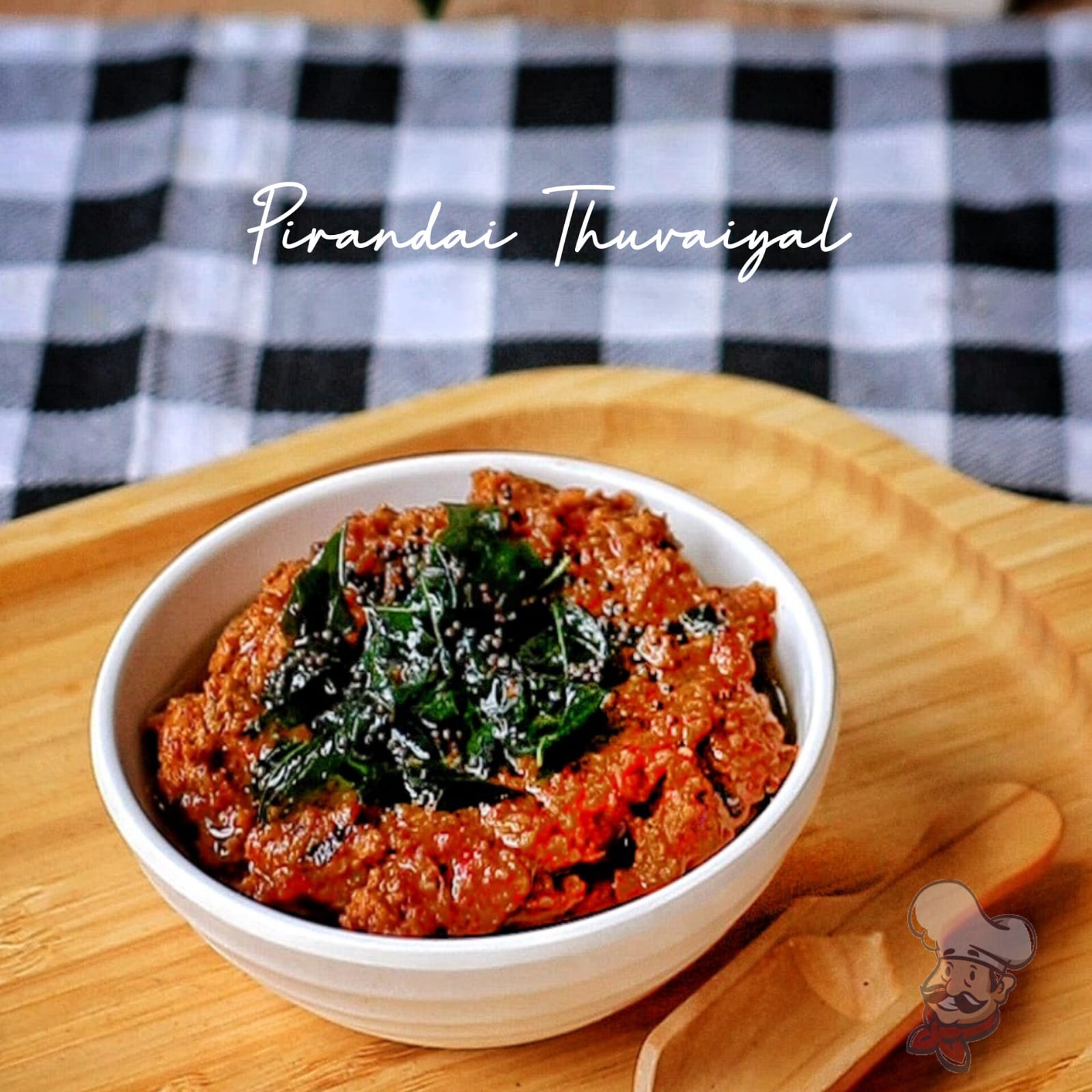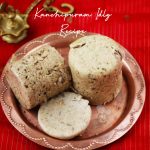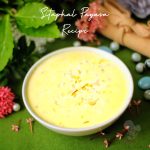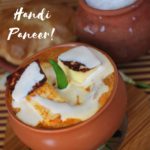"Blend together fresh Pirandai stems, tangy tamarind, and fiery red chilies to create a vibrant and flavorful Pirandai Thuvayal." Experience the feel of authentic dishes from the treasure trove of our forefathers that always come with a blend of deliciousness and nutrition.
Table Of Contents:
1. Pirandai Thuvayal
2. An Insight Into South Indian Parambariya Unavu Murai: (traditional Food Culture)
3. The Role Of Pirandai ( adamant creeper) In South Indian Cuisine
4. A prelude On Pirandai Thuvayal
5. The Origin And Historical Journey Of Pirandai
6. The Biological Factors Of Pirandai
7. The Health Benefits Of Pirandai
8. Needed Ingredients To Make pirandai Thuvayal
9. Step Wise Directions To Make Authentic South Indian Pirandai Thuvayal
10. Points To Ponder
11. Nutritional Value
12. Faqs
13. Pirandai Thuvayal In A Nutshell
14. Common South Indian Menu Which Includes Pirandai Thuvayal
15. A Glimpse Into The Traditional Lunch scenario From A Day Of Our Ancestors
16. Takeaway
"Pirandai Thuvayal, a culinary delight hailed for its remarkable flavor and exceptional health benefits, is a testament to the rich tapestry of Indian cuisine. With its vibrant green hue and tantalizing aroma, this tangy chutney captivates the senses and takes the palate on an unforgettable journey. Packed with the goodness of pirandai, a medicinal plant known for its remarkable healing properties, this thuvayal not only satisfies the taste buds but also nourishes the body, making it a true culinary masterpiece that deserves high praise."
An Insight Into South Indian Parambariya Unavu Murai: (traditional Food Culture):
South India's Parambariya Unavu Murai, or traditional food culture, is a vibrant tapestry of flavors, techniques, and ingredients that have been passed down through generations. Rooted in the region's rich agricultural heritage and cultural diversity, it showcases a deep understanding of the balance between taste, nutrition, and well-being.
One of the defining characteristics of Parambariya Unavu Murai is its emphasis on fresh, locally sourced ingredients. South Indian cuisine celebrates the abundance of tropical fruits, vegetables, grains, and spices available in the region. From the humble rice to the aromatic spices like curry leaves, mustard seeds, and tamarind, each ingredient plays a vital role in creating a harmonious blend of flavors.
Rice holds a central place in the South Indian food culture, and it is often accompanied by an array of side dishes. The traditional meal consists of a variety of dishes served on a banana leaf, which typically includes steamed rice, sambar (lentil-based vegetable stew), rasam (a tangy soup), a selection of vegetable stir-fries, chutneys, pickles, leafy greens and curd. The balance of flavors, textures, and nutritional elements in this elaborate spread is carefully orchestrated to provide a wholesome and satisfying dining experience.
In summary, South India's Parambariya Unavu Murai is a treasure trove of culinary traditions that reflect the region's bountiful resources, utilization of simply grown greens and vegetables, cultural heritage, and holistic approach to food. It embodies a harmonious blend of flavors, nutrition, and cultural significance, making it a culinary journey worth exploring and savoring.
The Role Of Pirandai ( adamant creeper) In South Indian Cuisine:
The Adamant Creeper, scientifically known as Cissus quadrangularis, holds a significant place in South Indian cuisine and traditional medicine. Commonly referred to as "Pirandai" or "Veldt Grape," it is a medicinal plant that is highly valued for its health benefits and culinary uses.
In South Indian cuisine, Pirandai is primarily used to prepare chutneys and thuvayals (a type of condiment or relish). The tender shoots and leaves of the plant are harvested and used as a key ingredient in these preparations. Pirandai chutney is known for its tangy, spicy, and slightly bitter flavor profile. It is typically made by grinding the Pirandai along with other ingredients like red chilies, tamarind, garlic, and spices. The chutney is then enjoyed as a side dish with rice, dosa (fermented rice and lentil crepes), idli (steamed rice and lentil cakes), or roti (Indian bread).
Apart from its culinary uses, the Adamant Creeper is highly regarded in traditional medicine for its medicinal properties. It is believed to possess anti-inflammatory, analgesic, and digestive properties. In Ayurveda and Siddha systems of medicine, Pirandai is used to treat various ailments such as joint pain, digestive disorders, rheumatism, and fractures. It is also believed to promote bone health and aid in weight management.
In addition to its medicinal properties, Pirandai is rich in nutrients and contains vitamins, minerals, and antioxidants. It is particularly known for its high content of calcium, which contributes to its reputation as a bone-strengthening plant.
On the whole, the Adamant Creeper (Pirandai) plays a dual role in South Indian cuisine. It adds a unique flavor to chutneys and thuvayals, enhancing the taste of the dishes. Simultaneously, it is revered for its medicinal properties and is valued as a natural remedy for various health conditions.
A prelude On Pirandai Thuvayal:
In the vibrant tapestry of South Indian cuisine, Pirandai Thuvayal stands as a culinary masterpiece that combines enticing flavors with remarkable health benefits. Pirandai, also known as Adamant Creeper or Veldt Grape, is a medicinal plant deeply rooted in the region's traditional food culture. The prelude to this flavorful chutney is a tale of taste, nutrition, and the ingenuity of generations past.
Pirandai, with its succulent stems and heart-shaped leaves, possesses a unique tangy and slightly bitter taste. Its inclusion in South Indian cuisine stems from its versatile nature, both as a culinary ingredient and as a medicinal herb. With a history dating back centuries, Pirandai has been celebrated for its therapeutic properties, especially in Ayurveda and Siddha medicine.
To create the tantalizing Pirandai Thuvayal, the tender shoots and leaves of the plant are harvested, carefully cleaned, and prepared. Traditionally, the Pirandai is cooked or blanched to remove its oxalic acid content, which lends the herb its name "Adamant Creeper" due to its stubborn nature. This process also enhances the flavor profile and reduces any potential bitterness.
Once prepared, the Pirandai is combined with an array of ingredients to craft the thuvayal. Aromatic spices like red chilies, mustard seeds, and urad dal are toasted to release their flavors, creating a tantalizing base. The addition of tamarind lends a delightful tanginess, while grated coconut brings a creamy texture and richness to the chutney. Garlic, a common element in South Indian cuisine, adds depth and pungency.
The ingredients are skillfully ground together, blending their distinct flavors into a harmonious symphony. The result is a vibrant green chutney that showcases the essence of Pirandai, with hints of spice, tang, and umami. The Pirandai Thuvayal is typically enjoyed as a condiment or side dish, accompanying a variety of South Indian staples such as rice, dosa, idli, or roti.
The Origin And Historical Journey Of Pirandai:
The origin and history of Pirandai (Cissus quadrangularis) in India can be traced back to ancient times, deeply intertwined with the country's rich cultural and medicinal heritage. This remarkable plant has been valued for centuries for its medicinal properties and culinary uses, leaving a significant mark on Indian history.
Pirandai is native to the Indian subcontinent and is found in various regions across the country. It is believed to have originated in the arid regions of Central and Southern India, where it thrives in hot and tropical climates. The plant's botanical name, Cissus quadrangularis, refers to its distinctive four-angled stem, which is a notable characteristic of the species.
In India, Pirandai has been a part of traditional medicine systems, including Ayurveda and Siddha, for centuries. Ayurveda, an ancient holistic healing system, recognizes Pirandai for its various therapeutic properties. It is classified as a "Vajikarana" herb, which means it promotes sexual health and vitality. Pirandai is also known as a "bone setter" herb, with traditional uses for healing fractures and promoting bone health.
Pirandai has been revered in Indian folklore and traditional practices for its ability to treat a range of ailments. It has been used for its anti-inflammatory, analgesic, and digestive properties. The plant is believed to aid in alleviating joint pain, improving digestion, treating gastric ulcers, and managing obesity.
Beyond its medicinal applications, Pirandai has found its place in Indian cuisine, particularly in South Indian cooking. The tender shoots and leaves of Pirandai are used as a culinary ingredient, adding a tangy and slightly bitter flavor to dishes. Pirandai Thuvayal, a chutney made from the plant, is a popular condiment in South Indian cuisine, known for its taste and health benefits.
Over time, Pirandai has gained recognition outside of India, with its use expanding to other parts of the world. Its therapeutic properties have attracted attention in the field of modern herbal medicine, leading to research and studies on its potential health benefits.
In conclusion, Pirandai's origin and history in India can be traced back to ancient times, where it has been deeply intertwined with traditional medicine systems and culinary practices. Its widespread use and recognition in Indian culture highlight its significance as a medicinal herb and a flavorful ingredient. With a rich historical background, Pirandai continues to be celebrated for its healing properties and culinary contributions in India and beyond.
The Biological Factors Of Pirandai:
Pirandai (Cissus quadrangularis) possesses several biological factors that contribute to its unique characteristics and potential health benefits. Here are some notable biological factors of Pirandai:
Stem Structure: One of the distinctive features of Pirandai is its succulent stem, which has four angles or corners. This characteristic gives it the botanical name "quadrangularis." The stem is thick, fleshy, and often green in color, storing water and nutrients to withstand arid conditions.
Nutritional Composition: Pirandai is a rich source of various nutrients and bioactive compounds. It contains a range of vitamins, including vitamin C, vitamin E, and carotenes. It is also a good source of minerals like calcium, phosphorus, and iron. Additionally, Pirandai contains flavonoids, triterpenoids, and other phyto chemicals that contribute to its medicinal properties.
The Health Benefits Of Pirandai:
Medicinal Properties: Pirandai is renowned for its medicinal properties in traditional systems of medicine. It is believed to possess anti-inflammatory, analgesic, antioxidant, and gastro protective properties. These properties are attributed to the presence of bio active compounds like resveratrol, quercetin, and kaempferol, which have been studied for their potential health benefits.
Bone Health: Pirandai is often referred to as a "bone setter" in traditional medicine systems. It is believed to have the ability to promote bone health and aid in the healing of fractures. Some studies suggest that Pirandai extracts may enhance bone formation, increase calcium absorption, and exhibit anti-osteoporotic effects.
Joint Health: Pirandai is known for its potential benefits in joint health. Traditional medicine attributes its anti-inflammatory and analgesic properties to help alleviate joint pain and stiffness associated with conditions like arthritis. It is believed to modulate inflammatory pathways and reduce oxidative stress, contributing to joint health.
Digestive Benefits: Pirandai has been traditionally used for its digestive benefits. It is believed to promote digestion, alleviate gastric ulcers, and reduce symptoms of gastrointestinal disorders. The plant's bio active compounds, including flavonoids and tannins, may contribute to its gastroprotective and anti-ulcer activities.
Potential Anti-obesity Effects: Pirandai has been investigated for its potential anti-obesity properties. Studies suggest that certain compounds in Pirandai may help in weight management by reducing adipogenesis (formation of fat cells) and increasing lipolysis (breakdown of fats).
Here comes the recipe of pirandai thuvayal that can be made within minutes at home.

Needed Ingredients To Make pirandai Thuvayal:
Pirandai (Adamant Creeper): The star ingredient, Pirandai brings a tangy and slightly bitter flavor to the thuvayal, while also offering its unique health benefits.
Red Chilies: These fiery spices add a delightful kick of heat, balancing the flavors of the thuvayal and imparting a subtle spiciness.
Tamarind: With its tangy and sour taste, tamarind lends a distinct tartness to the pirandai thuvayal, enhancing its overall flavor profile.
Garlic: The pungent garlic adds depth and complexity to the thuvayal, infusing it with its signature aromatic and savory notes.
Mustard Seeds: These tiny seeds, when tempered, release a nutty and slightly bitter flavor, adding a delightful crunch to the thuvayal.
Urad Dal: Toasted urad dal lends a subtle nuttiness and earthy flavor to the thuvayal, enhancing its overall taste and texture.
- Gingelly Oil: It is added for taste and flavor as it gives an exclusive aroma and added taste to pirandai thuvayal
- Shallots: Shallots always enhances the overall flavor and gives a tinge of mild sweetness to the dish.
- Asafoetida: It is one of the important ingredients for any thuvayal due to its digestive properties.
- Curry leaves: It is used to give an added flavor to pirandai thuvayal so that the tartness of pirandai does not over dominate the taste of the thuvayal.
- Mustard Seeds: It is the basic tempering agent for any Indian dish.
- Tamarind: It is added to give tanigness to the dish.
Step Wise Directions To Make Authentic South Indian Pirandai Thuvayal:
Take some tender pirandai stems. Pirandai has thorns along its stems, which can cause irritation or pricking. Wear gloves to protect your hands while handling it. Start by cutting off the tough, woody ends of the pirandai stems. Use a sharp knife or kitchen shears to remove about half an inch from both ends.
Using a paring knife or vegetable peeler, carefully remove the thorns from the pirandai stems. Gently scrape the thorny ridges along the stem to remove them. Be cautious while doing this to avoid injuring yourself.
Pirandai has a tough outer skin that needs to be removed before use. Hold the pirandai stem firmly with one hand and use the other hand to peel away the skin. You can use a vegetable peeler or a knife to remove the outer layer. Peel off as much of the green skin as possible.
Once the skin is removed, snap the pirandai stem into smaller, manageable pieces. You can nip them into 2 to 3-inch long sections.
Place the pirandai pieces in a bowl or basin filled with water. Let them soak for about 10 to 15 minutes. This step helps to remove any dirt, impurities, or residual thorns.
After soaking, take the pirandai and rinse it under running water. Use your fingers to rub away any remaining dirt or impurities. Make sure to clean all the nooks and crannies.
After rinsing, pat the pirandai pieces dry with a clean kitchen towel or paper towels. Alternatively, you can let them air dry for a short while before using them in your cooking.
Heat a saucepan and tip in half a cup of gingelly oil and when it is heated tip in the measured quantities of dried red chili and lower the flame. Then sizzle some urad dhal and scatter for a while.
Throw in some curry leaves with a pinch of asafoetida powder. Now add a cup of peeled shallots along with a quarter cup of peeled garlic cloves. Keep stirring in low flame. Finally add a tiny ball of tamarind and stir in. When the whole mixture turns aromatic turn off the flame and wait for a while to cool it down.
Heat the saucepan again and tip in two tablespoons of gingelly oil and when it is heated, throw in a cup of pirandai stems and stir in. Let it get fried up in low flame. When it turns greenish brown, tender and crispy, turn off the stove. Take out the shallow fried pirandai stems using a slotted spoon and add it to a blender. Let the oil remain in the same saucepan and just keep it aside.
Drop in the other roasted ingredients into a blender along with the roasted pirandai and add the required salt. Sprinkle in a little water and blitz for a few pulses and make a coarse paste out of it. Transfer it to a bowl and keep aside.
Heat the saucepan along with the oil, and scatter some mustard seeds into it. When it splutters add a sprig of rougly torn curry leaves and when it sizzles up, just turn off the flame and add this tempering to the pirandai thuvayal.
Spread a scoop of sizzling hot rice to a plate and dribble some ghee over it. Add a tablespoon of pirandai thuvayal and mix it up well. Take a bite of this tasty rice with a crunchy bite of arisi appalam or vengaya vadagam to enjoy the experience.
Points To Ponder:
Handling Pirandai: Pirandai has a mildly sticky sap that can be irritating to the skin. It is advisable to wear gloves while handling and cleaning the Pirandai stems to avoid any discomfort. You can also rub a little oil on your hands before handling Pirandai to minimize the stickiness.
Cleaning and Preparing Pirandai: Rinse the Pirandai stems thoroughly under running water to remove any dirt or debris. Trim off the leaves and any thorns. Some recipes call for blanching the Pirandai stems to remove the oxalic acid content and reduce bitterness. If desired, blanch the stems in boiling water for a few minutes and then drain before using.
Balancing Flavors: Adjust the quantity of red chilies and tamarind according to your taste preferences. If you prefer a milder thuvayal, reduce the number of red chilies, and adjust the tamarind accordingly. Taste and adjust the seasoning to achieve the desired balance of tanginess, spiciness, and bitterness.
Tempering: Tempering is a crucial step in South Indian cuisine and adds depth to the flavors. In a separate pan, heat oil and add mustard seeds and urad dal. Allow them to splutter and turn golden brown. Then, add this tempering to the ground Pirandai mixture, giving the thuvayal a delightful aroma and additional texture.
Consistency and Texture: The texture of the thuvayal can be adjusted according to personal preference. If you prefer a smoother consistency, blend the ingredients well until you achieve a fine paste. For a chunkier texture, blend the ingredients coarsely, leaving some texture and small pieces of Pirandai.
Storage and Shelf Life: Pirandai Thuvayal can be stored in an airtight container in the refrigerator for up to 4-5 days. To maintain its freshness, cover the surface of the thuvayal with a thin layer of oil. Before consuming, bring it to room temperature and give it a good mix.
Faqs:
1. What is Pirandai Thuvayal?
Pirandai Thuvayal is a traditional South Indian chutney or relish made with Pirandai (Adamant Creeper) as the main ingredient. It is known for its tangy and slightly bitter flavor profile, and it is often enjoyed as a side dish with rice, dosa, idli, or roti.
2. How do I handle Pirandai without irritation?
Pirandai has a mildly sticky sap that can be irritating to the skin. It is recommended to wear gloves while handling and cleaning the Pirandai stems to avoid any discomfort. Rubbing a little oil on your hands before handling Pirandai can also help reduce stickiness.
3. Can I adjust the spiciness and tanginess of Pirandai Thuvayal?
Yes, you can adjust the spiciness and tanginess of Pirandai Thuvayal according to your taste preferences. Increase or decrease the quantity of red chilies and tamarind to achieve the desired level of heat and tanginess. It's always best to taste and adjust the seasoning to suit your palate.
4. How long can I store Pirandai Thuvayal?
Pirandai Thuvayal can be stored in an airtight container in the refrigerator for up to 4-5 days. To maintain its freshness, cover the surface of the thuvayal with a thin layer of oil. Before consuming, bring it to room temperature and give it a good mix.
5. Can I use Pirandai Thuvayal as a condiment for other dishes?
Absolutely! Pirandai Thuvayal is a versatile condiment and can be enjoyed with various dishes. It pairs well with steamed rice, dosa, idli, roti, or even as a spread on sandwiches or wraps. Feel free to explore different combinations and enjoy it as per your preference.
Pirandai: In A Nutshell:
- Nature: therapeutic
- Color: Greenish-brown
- Flavor: Tangy-bitter
- Consistency: Smooth
- Aroma: Aromatic
- Texture: Creamy
- Taste: Savory-spicy
Common South Indian Menu Which Includes Pirandai Thuvayal:
A regular South Indian meal menu typically consists of a variety of dishes that offer a balance of flavors, textures, and nutritional elements. Here's a sample menu that includes Pirandai Thuvayal as one of the dishes:
Main Course:
- Steamed Rice: A staple component of a South Indian meal.
- Sambar: A lentil-based stew with vegetables and aromatic spices.
- Rasam: A tangy and spicy soup made with tamarind, tomatoes, and spices.
- Aviyal: A mixed vegetable curry cooked in a coconut-based gravy.
- Pirandai Thuvayal: A tangy and slightly bitter chutney made with Pirandai.
Accompaniments:
- Poriyal: A stir-fried vegetable dish, such as beans or cabbage.
- Papad: Crispy lentil or rice-based wafers.
- Curd/Yogurt: A cooling and probiotic element.
- Pickle: A spicy and tangy condiment, usually made with mango or lime.
Extras:
- Sambar or Rasam Powder: A spice mix to enhance the flavors of sambar or rasam.
- Ghee: Clarified butter for added richness and flavor.
- Appalam: Crispy lentil or rice-based papadum.
Dessert:
- Payasam/Kheer: A sweet and creamy pudding made with rice, vermicelli, or lentils, flavored with cardamom and garnished with nuts.
Beverage:
- Buttermilk: A refreshing yogurt-based drink seasoned with spices like cumin and ginger.
It's worth noting that South Indian cuisine is incredibly diverse, and the specific dishes may vary based on regional preferences and personal choices. This menu provides a general idea of the dishes that are commonly enjoyed in a South Indian meal, with the inclusion of Pirandai Thuvayal to add its unique flavor and nutritional benefits.
A Glimpse Into The Traditional Lunch scenario From A Day Of Our Ancestors:
The family sits on a cool veranda under the shade of a large tree, surrounded by lush greenery. The gentle breeze carries the fragrant aroma of freshly cooked dishes. The dining area is adorned with banana leaves spread out as plates, adding a touch of natural elegance to the scene.
The meal begins with a prayer, expressing gratitude for the bountiful food. The matriarch of the family skillfully serves the meal, ensuring that everyone is well taken care of. Traditional copper or brass vessels and utensils gleam in the sunlight, reflecting the rich cultural heritage.
A variety of dishes are served, showcasing the culinary expertise passed down through generations. Steaming bowls of rice take center stage, accompanied by an array of curries, lentil dishes, and vibrant vegetable preparations. Fragrant sambar and tangy rasam, both filled with aromatic spices, enhance the flavors of the meal.
Piping hot crispy papadams and crunchy pickles add an extra burst of flavor and texture to the feast. A velvety thuvayal, like Pirandai Thuvayal, is also served, offering its unique tangy-bitter taste that stimulates the senses.
Laughter and lively conversations fill the air as family members bond over shared stories and cherished memories. The flavorsome meal nourishes both body and soul, creating a sense of togetherness and contentment.
After the satisfying meal, a comforting dessert like payasam or kheer is served, satisfying the sweet cravings and bringing a perfect end to the lunch. Satisfied and satiated, the family rests and enjoys a moment of tranquility before continuing with their day.
This glimpse into a lunch scenario from our ancestors reflects the simplicity, harmony, and deep connection with nature that characterized their way of life. It reminds us of the importance of shared meals, family bonds, and the appreciation of traditional flavors and culinary traditions.
Takeaway:
As the Pirandai Thuvayal graces the dining table, it serves as a testament to the wisdom of South Indian culinary traditions. It encapsulates the art of balancing flavors, harnessing the power of indigenous ingredients, and nourishing both the body and the soul. With each spoonful, the Pirandai Thuvayal embodies a delicious ode to the vibrant heritage and profound wisdom of South Indian cuisine.
Ingredients
Directions
Take some tender pirandai stems. Pirandai has thorns along its stems, which can cause irritation or pricking. Wear gloves to protect your hands while handling it. Start by cutting off the tough, woody ends of the pirandai stems. Use a sharp knife or kitchen shears to remove about half an inch from both ends.
Using a paring knife or vegetable peeler, carefully remove the thorns from the pirandai stems. Gently scrape the thorny ridges along the stem to remove them. Be cautious while doing this to avoid injuring yourself.
Pirandai has a tough outer skin that needs to be removed before use. Hold the pirandai stem firmly with one hand and use the other hand to peel away the skin. You can use a vegetable peeler or a knife to remove the outer layer. Peel off as much of the green skin as possible.
Once the skin is removed, snap the pirandai stem into smaller, manageable pieces. You can nip them into 2 to 3-inch long sections.
Place the pirandai pieces in a bowl or basin filled with water. Let them soak for about 10 to 15 minutes. This step helps to remove any dirt, impurities, or residual thorns.
After soaking, take the pirandai and rinse it under running water. Use your fingers to rub away any remaining dirt or impurities. Make sure to clean all the nooks and crannies.
After rinsing, pat the pirandai pieces dry with a clean kitchen towel or paper towels. Alternatively, you can let them air dry for a short while before using them in your cooking.
Heat a saucepan and tip in half a cup of gingelly oil and when it is heated tip in the measured quantities of dried red chili and lower the flame. Then sizzle some urad dhal and scatter for a while.
Throw in some curry leaves with a pinch of asafoetida powder. Now add a cup of peeled shallots along with a quarter cup of peeled garlic cloves. Keep stirring in low flame. Finally add a tiny ball of tamarind and stir in. When the whole mixture turns aromatic turn off the flame and wait for a while to cool it down.
Heat the saucepan again and tip in two tablespoons of gingelly oil and when it is heated, throw in a cup of pirandai stems and stir in. Let it get fried up in low flame. When it turns greenish brown, tender and crispy, turn off the stove. Take out the shallow fried pirandai stems using a slotted spoon and add it to a blender. Let the oil remain in the same saucepan and just keep it aside.
Drop in the other roasted ingredients into a blender along with the roasted pirandai and add the required salt. Sprinkle in a little water and blitz for a few pulses and make a coarse paste out of it. Transfer it to a bowl and keep aside.
Heat the saucepan along with the oil, and scatter some mustard seeds into it. When it splutters add a sprig of rougly torn curry leaves and when it sizzles up, just turn off the flame and add this tempering to the pirandai thuvayal.
Spread a scoop of sizzling hot rice to a plate and dribble some ghee over it. Add a tablespoon of pirandai thuvayal and mix it up well. Take a bite of this tasty rice with a crunchy bite of arisi appalam or vengaya vadagam to enjoy the experience.









Outstanding post, you have pointed out some great details , I too believe this s a very good website.